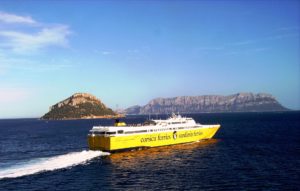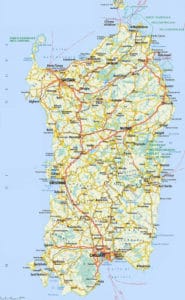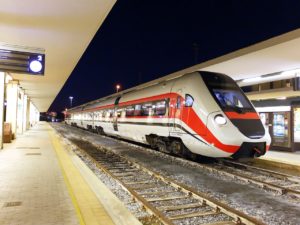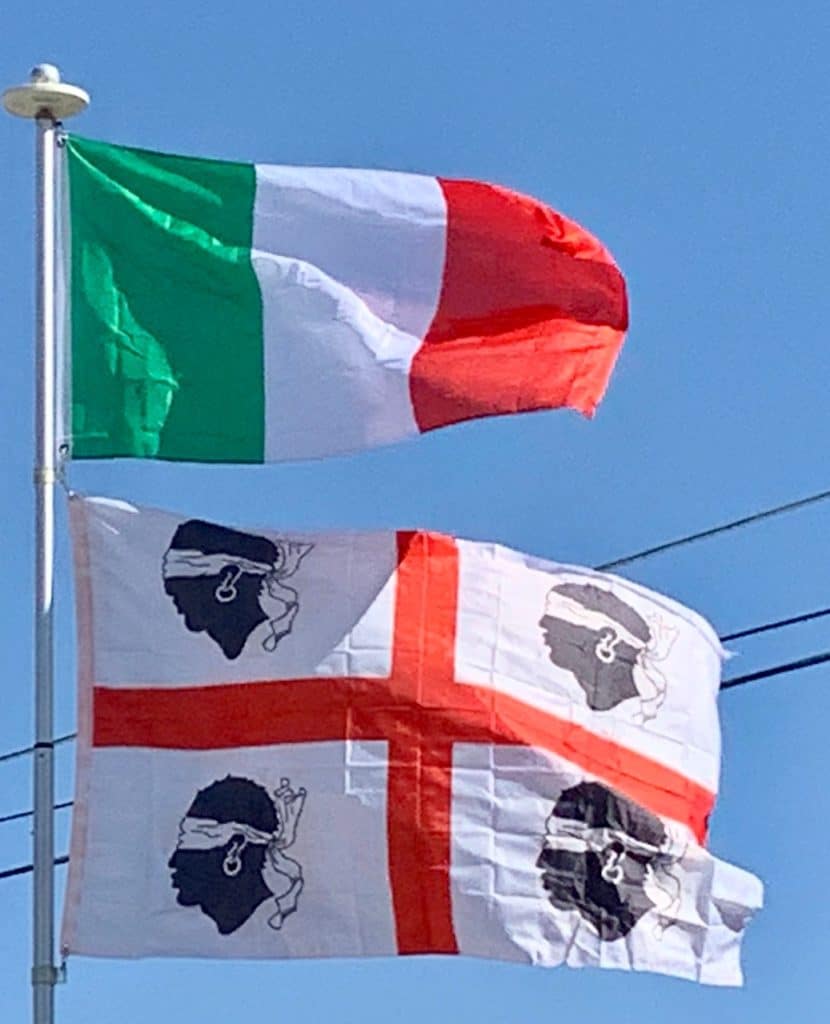
A regional ferry company, the Saremar, links the main island to the islands of La Maddalena and San Pietro, and from 2011, also the port of Olbia with Civitavecchia and Porto Torres with Savona.
About 40 tourist harbors are located along the Sardinian coasts.
Road:
Sardinia is the only Italian region without Autostrade, but the road network is well developed with a system of no-toll roads with dual carriageway, called superstrade (en: super roads), that connect the principal towns and the main airports and seaports. The principal road is the SS131 “Carlo Felice“, linking the south with the north of the island, crossing the most historic regions of Porto Torres and Cagliari; it is part of European route E25. The SS 131 d.c.n links Oristano with Olbia, crossing the hinterland Nuoro region. Other roads designed for high-capacity traffic link Sassari with Alghero, Sassari with Tempio Pausania, Sassari – Olbia, Cagliari – Tortolì, Cagliari – Iglesias, Nuoro – Lanusei. A work in progress is converting the main routes to highway standards, with the elimination of all intersections. The secondary inland and mountain roads are generally narrow with many hairpin turns, so the speed limits are very low.

Public transport buses reach every town and village at least once a day; however, due to the low density of population, the smallest territories are reachable only by car. The Azienda Regionale Sarda Trasporti (ARST) is the public regional bus transport agency. Networks of city buses serve the main towns (Cagliari, Iglesias, Oristano, Alghero, Sassari, Nuoro, Carbonia and Olbia).
Rail:
The Sardinian railway system was developed starting from the 19th century by the Welsh engineer Benjamin Piercy.
Today there are two different railway operators:
Trenitalia which connects the most populated towns, the main ports and also the Italian peninsula through the use of train ferries. This network is the most modern on the island, running primarily diesel locomotives such as the Alstom Minuetto and, from 2015 the faster tilting train CAF ATR365 and ATR 465, specifically designed for the Sardinian railway network;

ARST: the trains run on narrow-gauge track, are generally slow, due to the tortuosity of the lines, except for the electrified tram-trains operating in the metropolitan areas of Sassari and Cagliari.
The Trenino Verde (Little Green Train) is a railway tourism service operated by ARST. Vintage railcars and steam locomotives run through the wildest parts of the island. They allow the traveller to have scenic views impossible to see from the main roads.
Flag of Sardinia:
The flag of Sardinia, called the flag of the Four Moors or simply the Four Moors represents and symbolizes the island of Sardinia (Italy) and its people. It was also the historical flag and coat of arms of the Spanish and later Savoyard Kingdom of Sardinia. It was first officially adopted by the autonomous region in 1950 with a revision in 1999, describing it as a “white field with a red cross and a bandaged Moor’s head facing away from the left (the edge close to the mast) in each quarter” (Regional Law 15 April 1999, n. 10, Art. 1).
